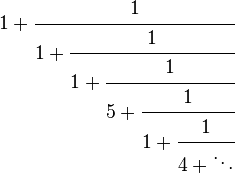Lieb's square ice constant
| Binary | 1.10001010001000110100010111001100… |
| Decimal | 1.53960071783900203869106341467188… |
| Hexadecimal | 1.8A2345CC04425BC2CBF57DB94EDCA6B2… |
| Continued fraction |  |
| Algebraic form |  |
Lieb's square ice constant is a mathematical constant used in the field of combinatorics to quantify the number of Eulerian orientations of grid graphs. It was introduced by Elliott H. Lieb in 1967.[1]
Definition
An n × n grid graph (with periodic boundary conditions and n ≥ 2) has n2 vertices and 2n2 edges; it is 4-regular, meaning that each vertex has exactly four neighbors. An orientation of this graph is an assignment of a direction to each edge; it is an Eulerian orientation if it gives each vertex exactly two incoming edges and exactly two outgoing edges. Denote the number of Eulerian orientations of this graph by f(n). Then
is Lieb's square ice constant.
Some historical and physical background can be found in the article Ice-type model.
See also
References
- ↑ Lieb, Elliott (1967). "Residual Entropy of Square Ice". Physical Review 162 (1): 162. doi:10.1103/PhysRev.162.162.
- ↑ (sequence A118273 in OEIS)
![\lim_{n \to \infty}\sqrt[n^2]{f(n)}=\left(\frac{4}{3}\right)^\frac{3}{2}=\frac{8 \sqrt{3}}{9}=1.5396007\dots](../I/m/6de7c7221c91d4702db7236858e40f8f.png)